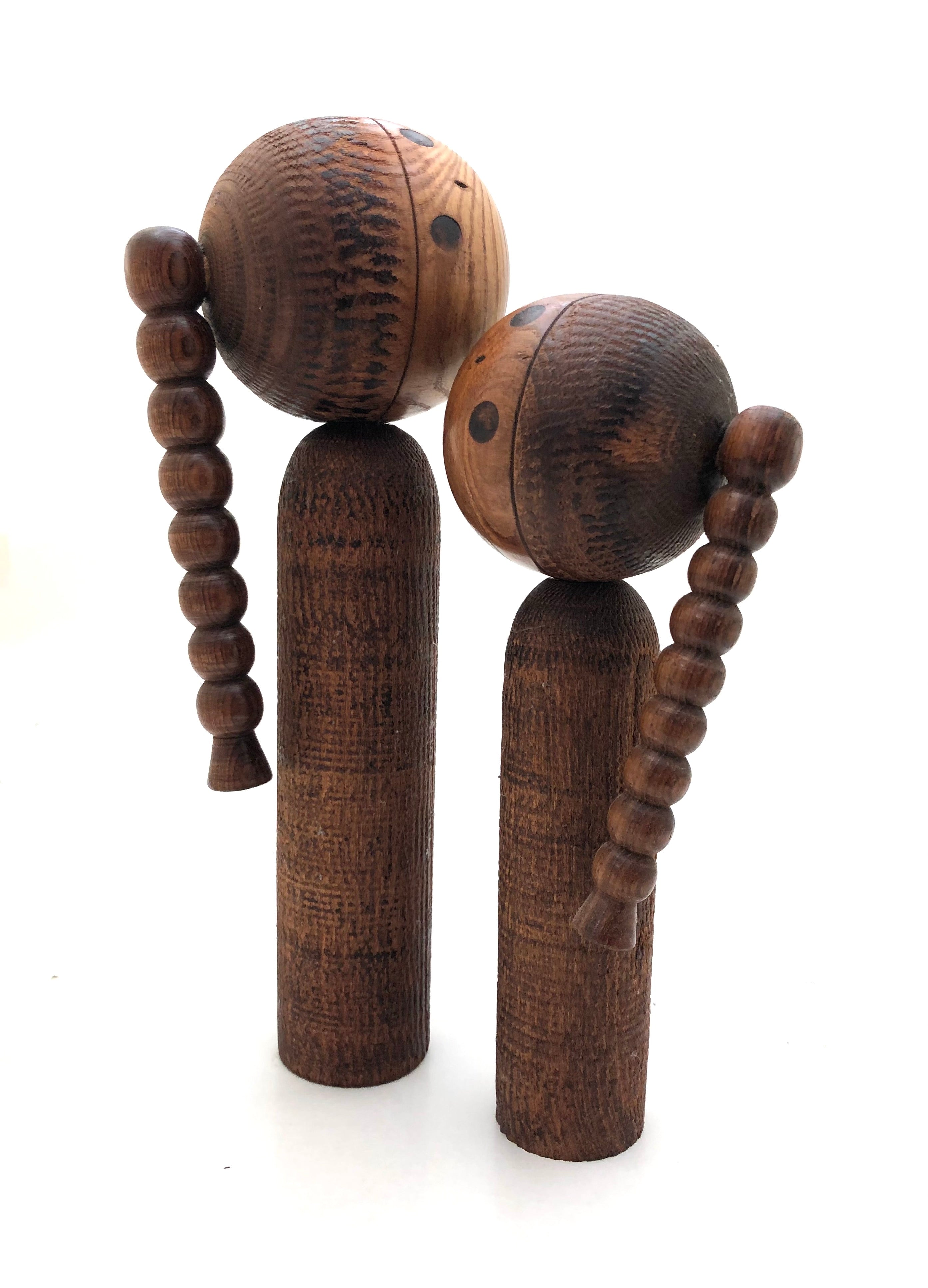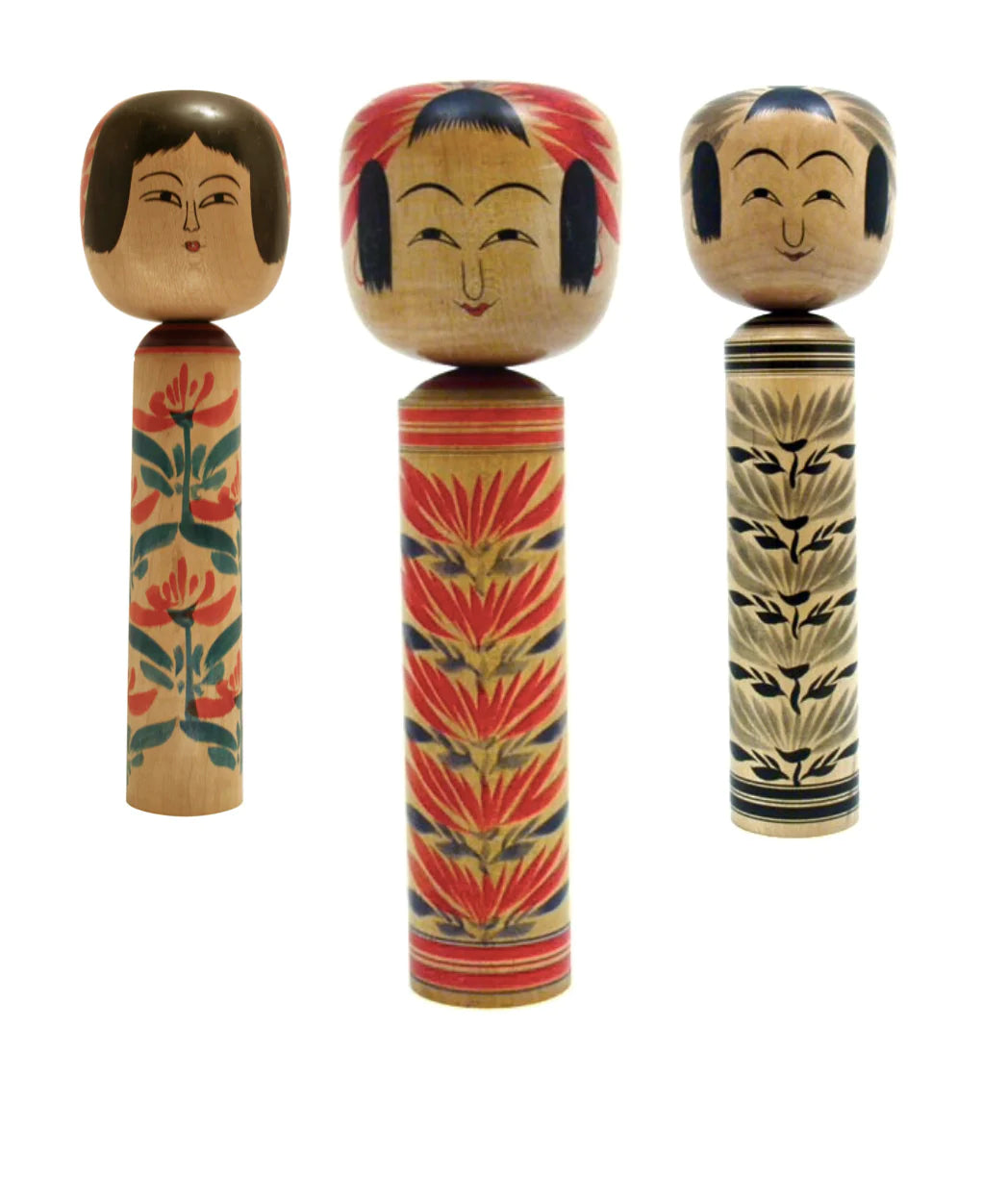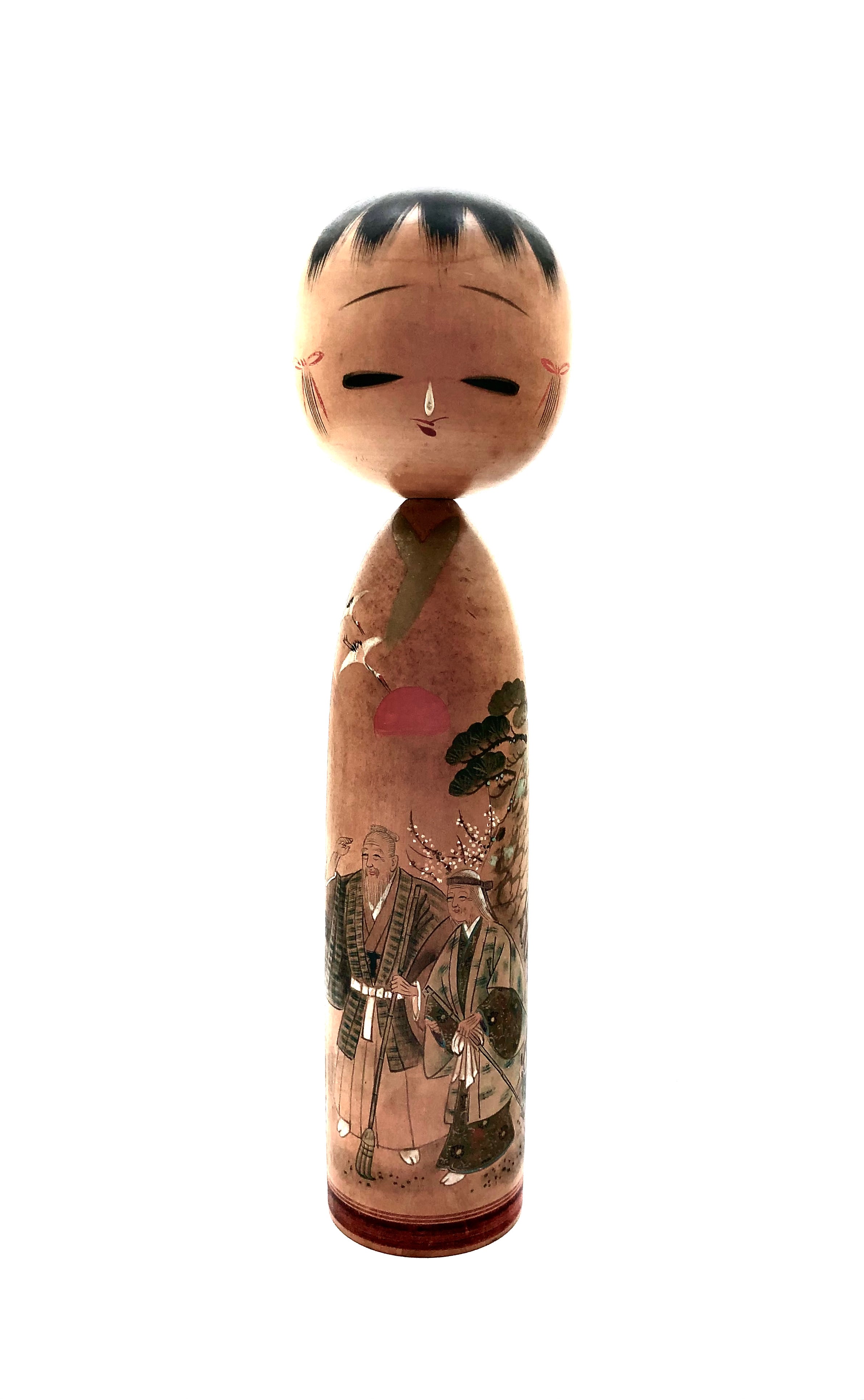

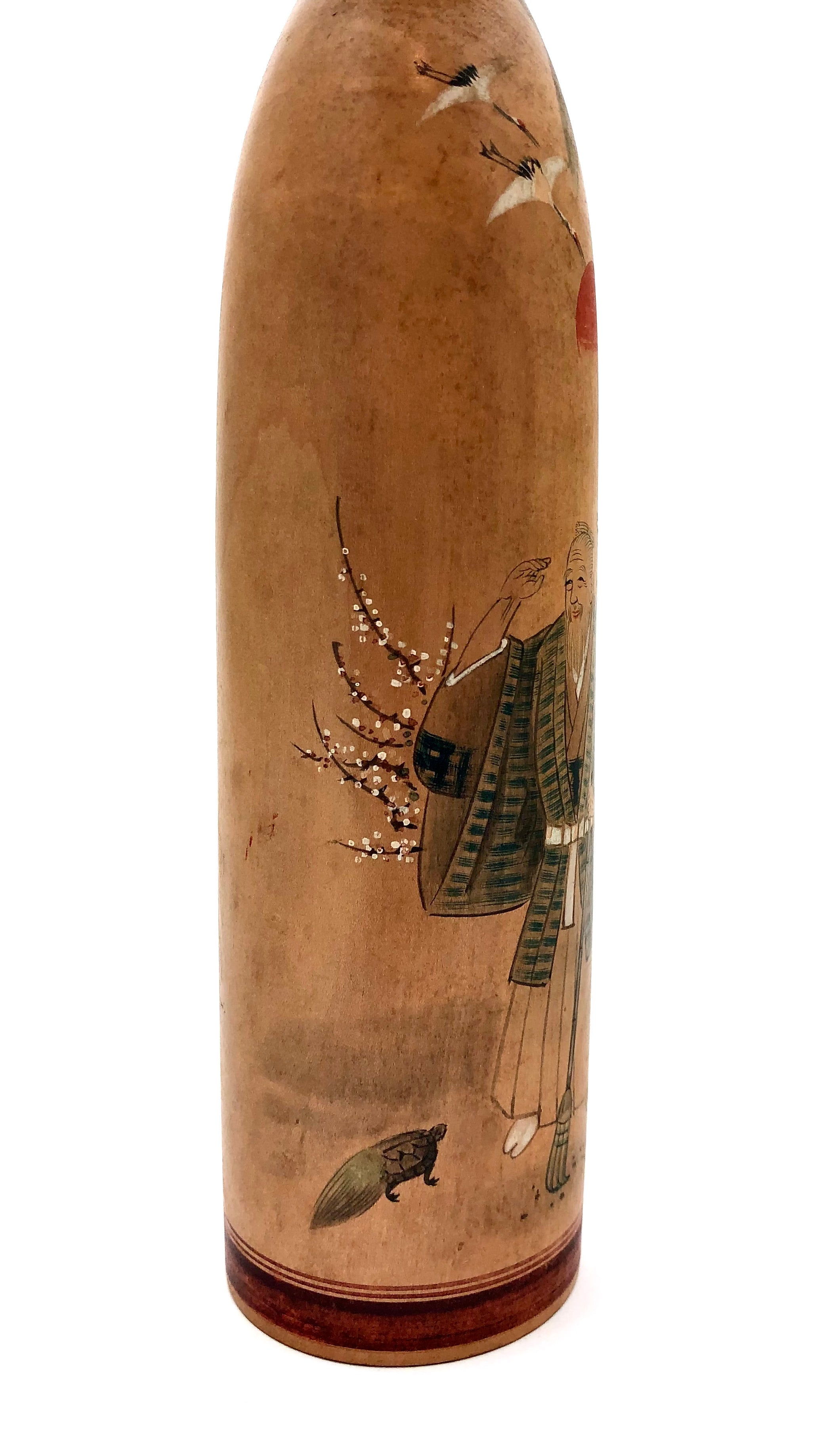

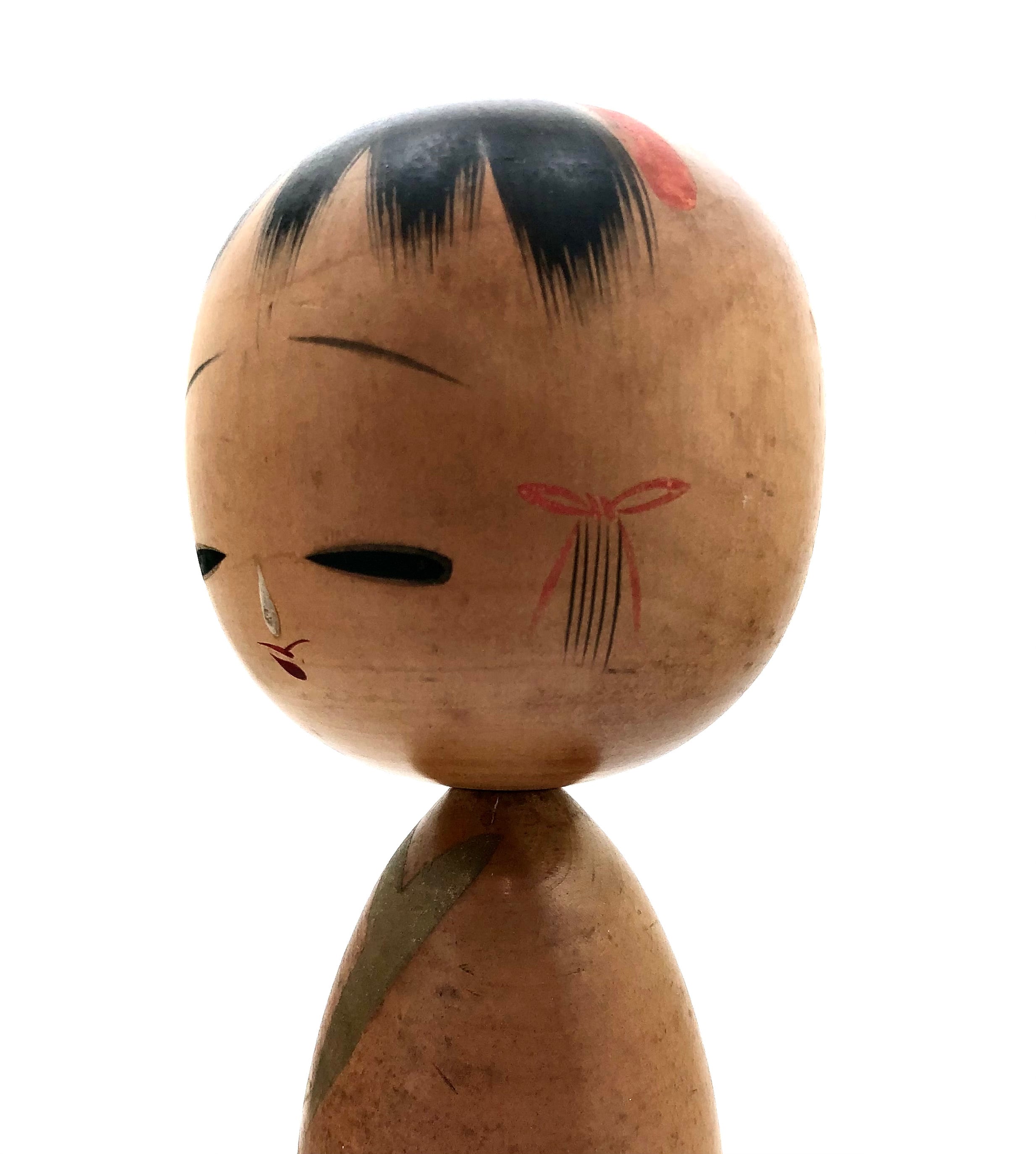
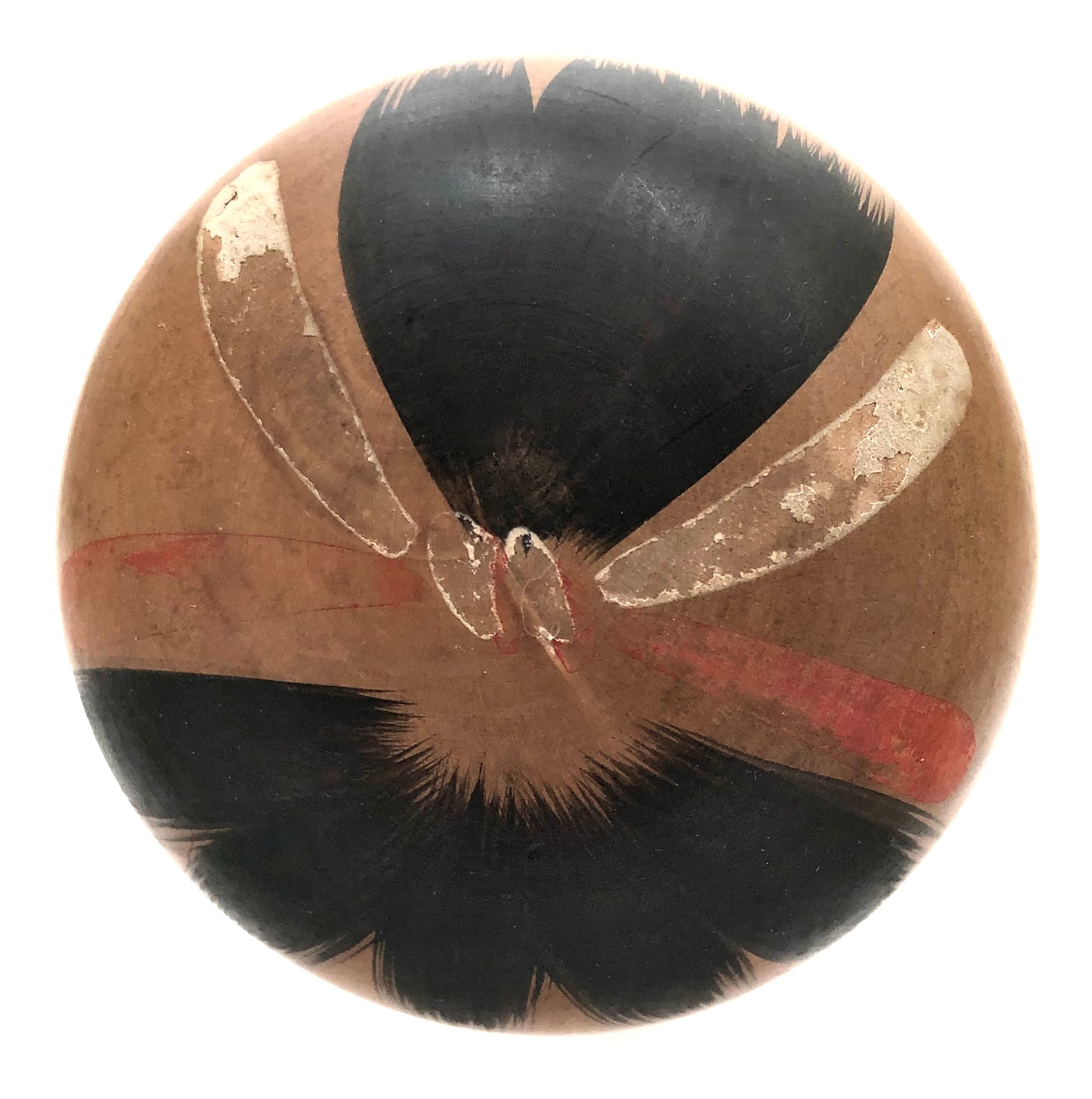
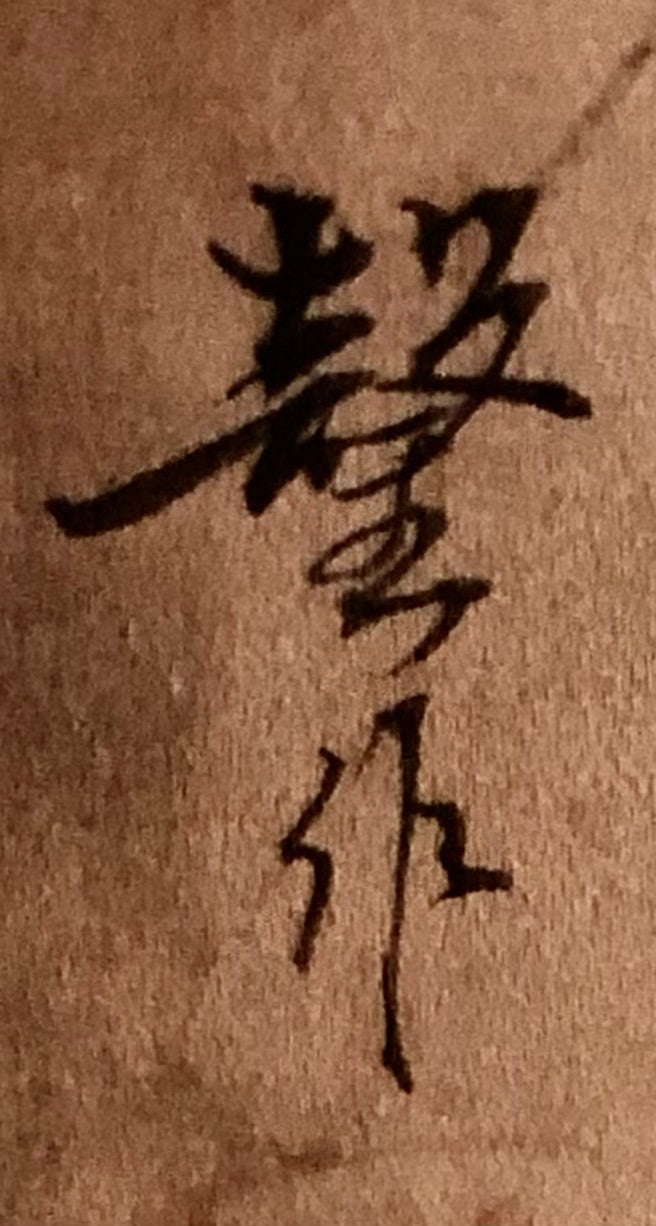
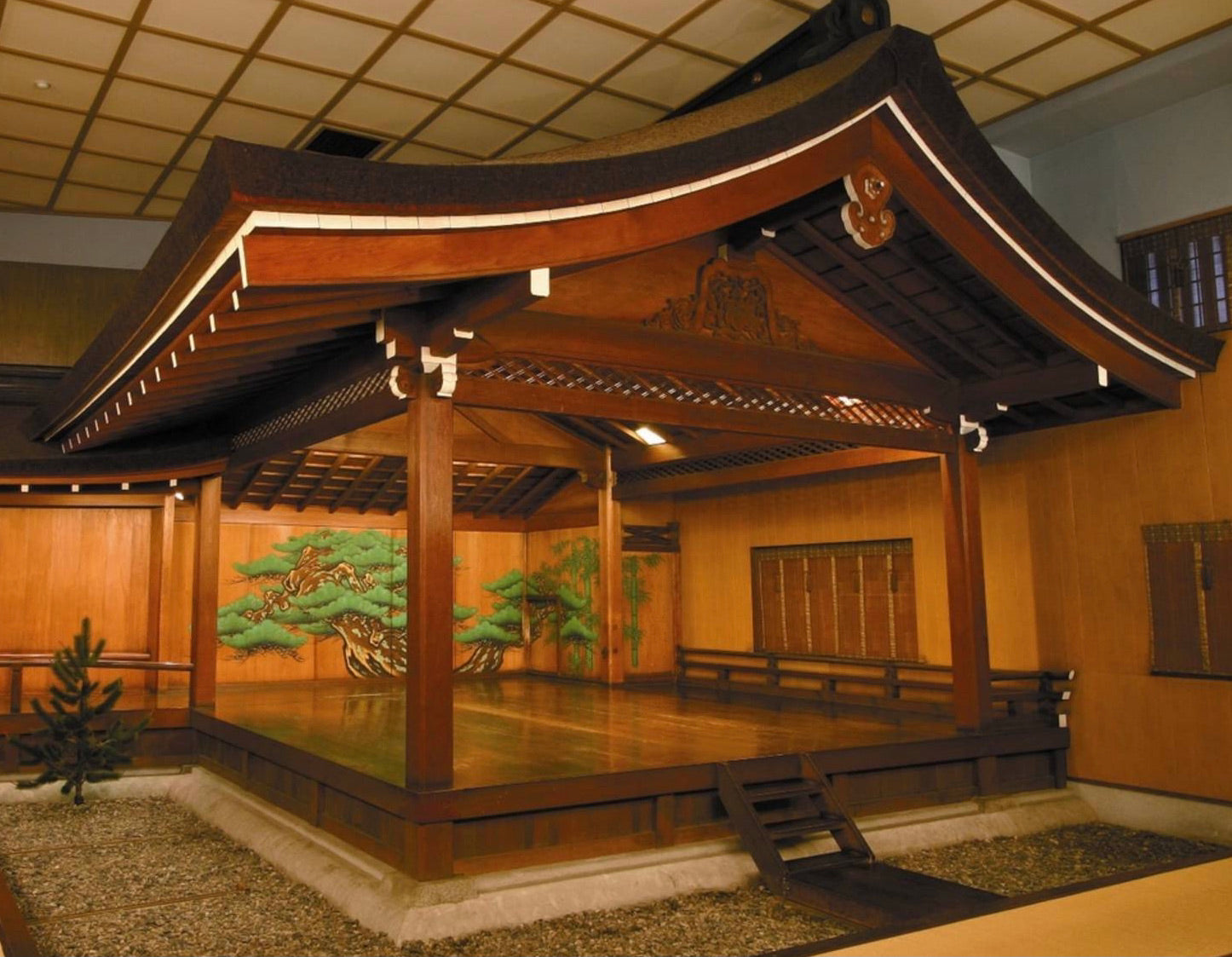
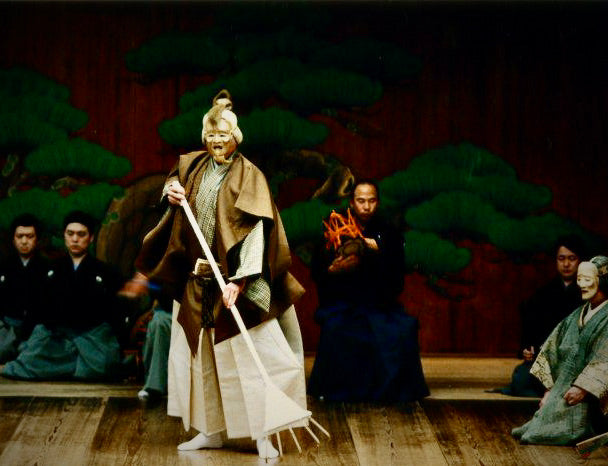
Vintage Japanese Hand-painted Takasago Kokeshi Inspired by Kanze Motokiyo and Signed by Kei
All our items ship free in the US
Dimensions: 12-0”h x 2-1/2”dia
This wonderful vintage, lathe-turned one-of-a-kind Takasago Kokeshi, and of archival quality, and collectors find. The most unique feature is the hand painting of the renowned Takasago couple. The traditional iconography of its protagonists, (the most prominent figures in Noh Theatre), has been re-purposed in the form of this Sosaku Kokeshi. The Takasago story is a regular performance are commonly sung, at Noh theatre for it is considered an auspicious and beloved tale.
The beautifully colored painting on the front of the doll represents the elderly couple in full traditional costume, with detailed facial features, sweeping the area below a pair of majestic pine trees. According to legend, the pines and the couple are destined to remain together for eternity despite any separation. The pine is the renowned Takasago Pine on the Suminoe shore (a historic scenic beach).
The elderly man is named Jou, (Okina), and the elderly woman is known as Uba, (Ouna), and as a couple referred to as Jotomba, who begins to recite and sing a poem that tells the story of Takasago and Suminoe. The elderly couple represents the incarnation of the spirits of the Takasago pine, the symbol par excellence of conjugal love, and a bond that transcends space and time, who as a pair then set sail across the bay on a small boat and disappear beyond the horizon.
The head of the doll has transitional facial features with a hair bow and side hair fringes. The painted work incorporated into this expressive Kokeshi honors the longevity and harmonious relationship of the old couple by comparing the blissful longevity of the pine to the eternal flowering of the art of Japanese poetry. The pine represents a very important Matsu motif in Japanese poetry and art, a symbol of health, longevity, and good luck. Since ancient times in Japan, people have believed that Gods dwell in pine trees precisely because of their evergreen nature. Being a tree that often lives exposed to wind and bad weather, surviving even on rocky terrain and mountain slopes, they embody the virtue of resistance, as well as the eternal love between the two spirits withstanding time and separation. Finally, due to its paired needles, it also refers to the concepts of fertility and marital happiness.
The most stunning aspect of this drawing is the exceptionally detailed clothing on each figure as well as all the surrounding visual elements. The presence of the majestic pine tree and interestingly enough, a cherry tree, and other recurring motifs including the broom and rake. The elderly couple is said to sweep away ill-fortune and rake in the good and desirable. All are artistically represented. The presence of two cranes, (Tsuru), in the Japanese tradition, are symbols of elegance, longevity, good luck, and marital fidelity, and are shown in flight against the backdrop of the red, rising sun. At the foot of Jou, is a turtle, (Minogame), regarded as a very auspicious creature that has made appearances in arts, crafts, and even in modern-day popular anime culture. It is said that this style of the turtle is so old it has a train of seaweed growing on its back, symbolizing longevity and felicity. The doll is signed in ink on the side of the figure by the artist using the name, Kei with an unreadable chop of the owner of the doll, (Kei created one-off Kokeshi with a focus on Noh Plays, which were presented to the lead male actor (Shite), in honor of his Takasago performances at The Yamamoto Noh Theater Osaka.
Condition: Excellent and commensurate with age, beautiful patination of the wood with some loss of the red and white painted hair bow on the top of the doll's head. No dents or restoration. Originally purchased in 1978 at the MGF Antique Auction House, Osaka.
NOTE: Zeami Motokiyo, also called Kanze Motokiyo, (c. 1363-1443), formerly known as Aioi was a Japanese aesthetician, an actor, and a playwright. His father, Kan'ami, introduced him to Noh theater performance at a young age and found that he was a skilled actor. Zeami was also skilled in acting and decided to form a family theater ensemble. As the family theater troupe grew in popularity, Zeami had the opportunity to perform in front of the Shogun, Ashikaga Yoshimitsu. The Shogun was impressed by the young actor and began to initiate a friendship with the young actor. Zeami was introduced to Yoshimitsu's court and was provided with an education in Classical Literature and Philosophy while continuing to act. In 1374, Zeami received patronage and made acting his career. After the death of his father in 1385, he led the family troupe, a role in which he found much greater success.
Return Policy
Our antique/vintage pieces are identified/described and professionally photographed, and considered, “as is”, therefore all sales are final. Read our full refund and return policy.

